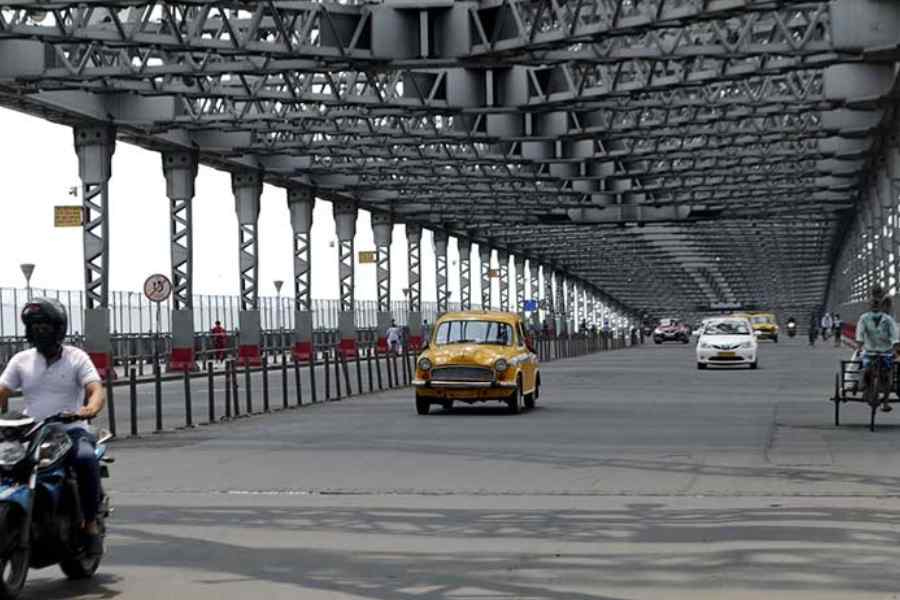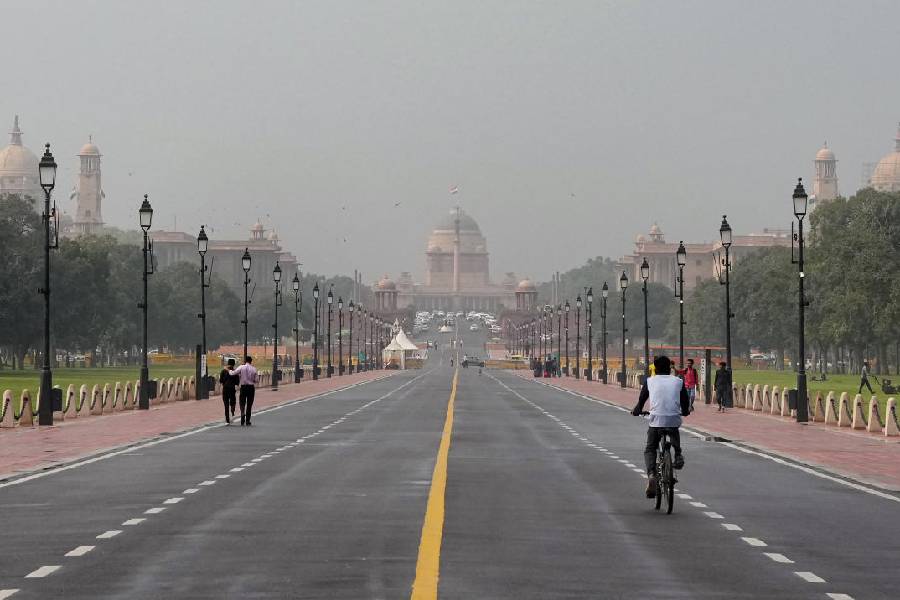Most of Bengal is breathing in poison, with the air bad enough in parts of Calcutta and Howrah for prolonged exposure to cause serious respiratory illness.
Only one among the 14 air quality monitoring stations in the state reported “satisfactory” air quality on Friday evening. Four reported “very poor”, six reported “poor” and the remaining three, “moderate”.
Three air quality monitoring stations in Calcutta — at Ballygunge, Bidhannagar and Victoria Memorial — reported “very poor” air quality at 6pm, as did the station at Ghusuri in Howrah.
According to the Central Pollution Control Board (CPCB), if air quality drops to “very poor”, it can lead to respiratory illness on prolonged exposure.
The air in Asansol and Durgapur was “poor”, which means that prolonged exposure can lead to breathing discomfort in most people.
Siliguri was the only place with “satisfactory” air quality. The CPCB says even this can cause minor breathing discomfort in sensitive people.
A pulmonologist said that while poor air quality can cause transient breathing discomfort in most people, very poor air quality can lead to long-term illnesses like asthma and chronic obstructive pulmonary disease (COPD).
“When the air quality drops to very poor, initially healthy people can develop transient symptoms. But on prolonged exposure, diseases like asthma and COPD can develop even in a non-smoker with no history of these illnesses in the family,” said Arup Halder, a pulmonologist with the Calcutta Medical Research Institute.
Polluted air also increases the possibility of viral infection, Halder said. “Increased exposure to polluted air can lead to allergic symptoms, sore throat, sleep disturbance, headache and body ache, too.”
Bengal accounts for 6 of the 131 cities across India identified as “non-attainment” cities under the National Clean Air Programme. This means they have been unable to meet the National Ambient Air Quality Standards over a five-year period.
Bengal’s six are: Calcutta, Howrah, Asansol-Raniganj, Durgapur, Haldia and Barrackpore.
“These cities have breached the permissible standards for particulate matters PM2.5 and PM10 in the ambient air,” said Anumita Roy Chowdhury, air quality management specialist and executive director of the Centre for Science and Environment.
Calcutta has seven stations spread across the city that continuously monitor air quality. Howrah has three.
Roy Chowdhury said the bulk of the air pollution in any place is caused by local sources of pollution. “There is some pollution that comes from neighbouring states or places, but the bulk is from local sources,” she said.
“The authorities should have a very strong action plan to stop these local sources of pollution. Some of these are pollutants released from industries, power plants, waste burning, vehicles and construction activities.”
A senior state government official said that the municipalities and municipal corporations in all the six non-attainment cities had been told to stop the open burning of waste, water the roads to prevent the resuspension of dust, and ask under-construction sites to cover up, among other measures.
Environment activists say that such orders are rarely implemented. This newspaper spotted thick smoke billowing from a plot belonging to the state forest department off VIP Road, near Dum Dum Park. Some men had collected horticultural waste and made a bonfire.
An official of the state pollution control board said a state-level committee formed to monitor the situation in non-attainment cities had met on Friday.












